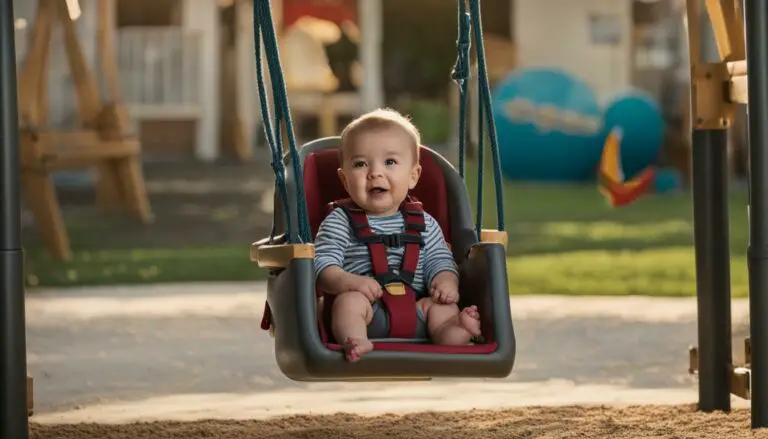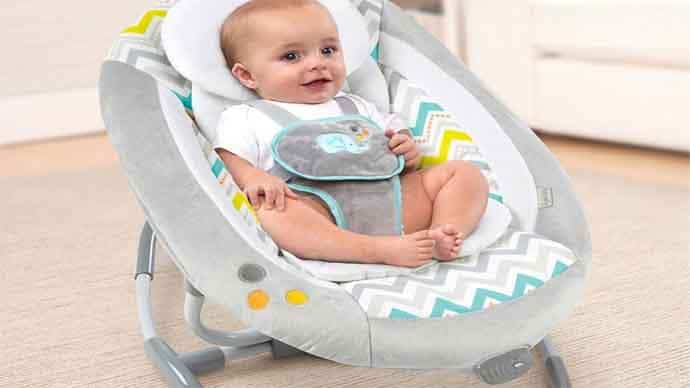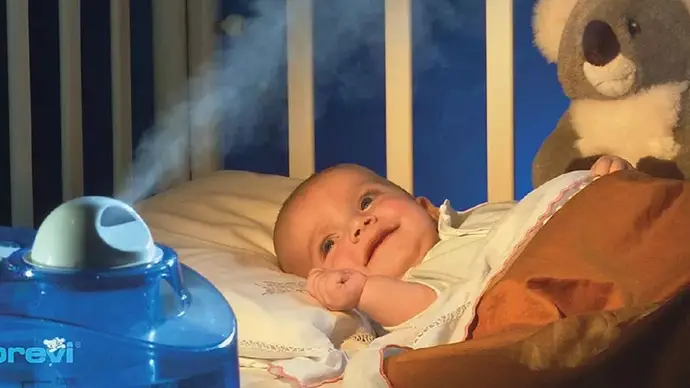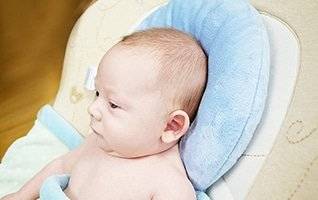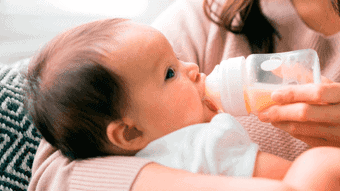As a new parent, you want to provide the best care for your baby and keep them safe and comfortable at all times. One of the tools you may have heard about is the baby swing, but you may be wondering if it’s safe and beneficial for your little one. In this article, we will explore the potential pros and cons of using baby swings and provide a comprehensive discussion on their impact on infant safety, sleep, and development.
Key Takeaways
- Baby swings can offer certain benefits, such as soothing effects and providing a safe space for infants
- However, swings also come with potential risks and safety concerns, such as the risk of positional asphyxiation
- Baby swings may affect infant sleep and development, such as the risk of flat head syndrome and torticollis
- It’s important to follow recommended guidelines for safe usage, and to consider individual baby needs and preferences
- The safety of your baby should always be the top priority

Understanding the Benefits of Baby Swings
If you’re a new parent, you might be wondering if using a baby swing is a good idea. The good news is that baby swings can offer several advantages that can make life easier for both you and your baby.
Soothing Effects
One of the main benefits of baby swings is that they can help soothe a fussy or colicky baby. The rhythmic motion of the swing can mimic the feeling of being rocked in a caregiver’s arms, which can help calm your little one and facilitate sleep. If your baby is having trouble settling down, a baby swing might be just the thing to help.
Safe Space for Infants
In addition to offering soothing effects, a baby swing can also provide a safe space for your infant. When you need to take a shower, make dinner, or attend to other household tasks, having a secure place to put your baby can be a lifesaver. Many baby swings come with safety harnesses or straps to help keep your baby secure, and some models even have built-in toy bars to keep your little one entertained while you work.
Assistance with Daily Tasks
Another benefit of baby swings is that they can assist with your daily tasks. With a baby swing, you can keep your baby close by while you fold laundry, clean, or catch up on work. You can even bring the swing outside with you while you garden or enjoy some fresh air. Having a baby swing can help you multitask and get more done throughout the day.
Potential Risks and Safety Concerns
While baby swings can be a helpful tool for parents, it’s important to understand the potential risks and safety concerns associated with their use. One of the biggest concerns is the risk of positional asphyxiation, which can occur when a baby is positioned in a way that restricts their breathing. This can happen when a baby is left in a swing for too long or is placed incorrectly in the swing.
To reduce the risk of positional asphyxiation, it’s important to choose a safe and reliable baby swing and use it properly. Always follow the manufacturer’s instructions carefully and make sure the swing is set up on a level surface. Never use a swing outdoors or on an uneven surface.
Another safety concern is the importance of proper use and supervision. Never leave your baby unattended in the swing, even for a short period of time. Always use the safety straps provided and make sure they are adjusted correctly. If your baby falls asleep in the swing, it’s important to move them to a safe sleeping surface such as a crib or bassinet.
It’s also important to be aware of the age and weight restrictions for your baby swing. Make sure it is appropriate for your baby’s age and weight, and do not continue using it once they have outgrown it. Always check your swing regularly for any signs of wear and tear, and discontinue using it if it becomes damaged or broken.
Safe Baby Swing Guidelines
Below are some additional guidelines to help ensure the safe use of your baby swing:
- Always use the swing in a safe and supervised environment.
- Make sure your baby is secured properly in the swing and never leave them unattended.
- Check the swing regularly for any signs of wear and tear or damage.
- Choose a swing that is appropriate for your baby’s age and weight.
- Follow the manufacturer’s instructions carefully and set up the swing on a level surface.
- Never use a swing outdoors or on an uneven surface.
- Discontinue using the swing once your baby has outgrown it.
By following these guidelines and being aware of the potential risks and safety concerns associated with baby swings, you can help ensure the safety and well-being of your little one.
Impact on Infant Sleep
It’s no secret that getting a baby to sleep can be a challenge, so it’s not surprising that many parents turn to baby swings for help. But is it safe to let your baby sleep in a swing?
The American Academy of Pediatrics (AAP) advises against using a swing, bouncer, infant seat, sleep positioner, or inclined sleeper for unsupervised sleep. Babies should always sleep on their back on a flat surface, free of any blankets, pillows, or other loose items that could pose a suffocation risk.
While swings may help soothe fussy babies and provide a temporary sleep solution, it’s important to remember that they are not designed for extended sleep. The AAP recommends that babies spend no more than 30 minutes in a swing at a time to reduce the risk of positional asphyxiation and other potential hazards.
When it comes to safe sleep, the best place for your baby is in a crib or bassinet that meets current safety standards. These sleep environments provide a firm, flat surface and are free of any hazards that could cause injury or suffocation. If you are having trouble getting your baby to sleep, talk to your pediatrician about other safe sleep solutions that may be more appropriate.
Alternatives to Baby Swings
If a swing isn’t the best option for your baby’s sleep needs, there are plenty of other alternatives to consider. Some popular options include:
- Bouncer seats: Like swings, bouncer seats provide a safe and soothing place for infants to sit and relax. They are often lightweight and portable, making them a great option for moving around the house.
- Infant seats: Similar to bouncer seats, infant seats provide a cozy and secure place for babies to rest. They may be designed to vibrate or rock, providing soothing motion that can help calm a fussy baby.
- Sleep positioners: These are designed to help keep babies positioned on their backs while they sleep. They may include features such as a headrest or elevated sides to keep the baby from rolling onto their side or stomach.
- Inclined sleepers: While controversial due to safety concerns, some parents find that inclined sleepers help their babies sleep better. These are designed to elevate the baby’s head and torso slightly, which can help with issues such as reflux. However, the AAP advises against their use due to the increased risk of suffocation or positional asphyxiation.

Torticollis is a condition in which an infant’s neck muscles become tight or shortened, leading to limited movement and a preference for looking in one direction. This can be caused by spending too much time in the same position, such as in a baby swing.
To prevent these issues, it’s important to monitor your baby’s time spent in a swing and provide plenty of supervised tummy time. You can also alternate your baby’s sleeping position and the direction they face in the swing to avoid prolonged pressure on one area.
Recommended Usage and Guidelines
When it comes to using baby swings, safety is the top priority. In order to ensure your baby is safe while using a swing, it’s crucial to follow recommended guidelines. Here are some tips to help you use baby swings in a safe and healthy manner:
- Age and weight restrictions: Make sure the swing is appropriate for your baby’s age and weight. Follow manufacturer instructions for weight restrictions and don’t put babies who cannot hold their head up unsupported in the swing.
- Positioning: Position the swing on a flat surface and make sure it’s stable and won’t tip over. Also, make sure your baby is secured in the swing according to the instructions and that the straps are snug but not too tight.
- Time limits: Don’t let your baby stay in the swing for too long. The American Academy of Pediatrics recommends no more than 30 minutes at a time, to avoid issues such as positional asphyxiation and overstimulation.
- Monitoring: Always supervise your baby while they are in the swing. Keep an eye on them and make sure they are comfortable and not in distress.
By following these guidelines, you can help ensure that your baby is safe and healthy while using a baby swing. It’s also important to note that while baby swings can be helpful, they should not be the only place your baby spends time. It’s important for babies to have supervised tummy time and to experience different positions for healthy development.
Considering Individual Baby Needs and Preferences
Your baby’s needs and preferences should always be taken into account when deciding whether or not to use a baby swing. Every baby is different, and what works for one might not work for another. Here are some factors to consider:
- Soothe: Does the swing have a calming effect on your baby? Some babies may not enjoy the motion of a swing, while others may find it comforting.
- Sleep: Is the swing helping your baby sleep better or worse? Some babies may sleep well in a swing, while others may have trouble getting quality sleep in a sitting position.
- Age and Weight: Does your baby meet the age and weight requirements for using a swing? Follow the manufacturer’s guidelines for safe use.
To help you make an informed decision, try placing your baby in a swing for short periods and observe their reaction. Do they seem comfortable and content, or fussy and agitated?
Remember, while swings can be a useful tool, they are not a substitute for human interaction and attention. Make sure your baby is getting plenty of face-to-face time with you for bonding, learning, and development.
“Every baby is unique, and what works for one may not work for another. This section will discuss the importance of considering individual baby needs and preferences when deciding whether or not to use a baby swing.”
You may also like o check:
When to Stop Using a Baby Swing: Safety and Development Tips For New Parents
Best Baby Swing :A Comprehensive Guide
Conclusion
After exploring the benefits and potential risks of baby swings, it’s important to make an informed decision that takes into account the safety and well-being of your baby.
Remember to always follow the recommended usage guidelines and supervise your baby while in the swing. It’s also crucial to consider individual baby needs and preferences, as what works for one baby may not work for another.
If you do choose to use a baby swing, make sure to monitor your baby’s comfort and response to the swing, and keep an eye out for any potential developmental concerns such as flat head syndrome or torticollis.
In conclusion, while baby swings can offer many benefits to both babies and parents, it’s crucial to weigh the potential risks against the rewards and prioritize the safety of your little one.

